What Kind of Speakers Can You Use With Focusrite 6i6

Toll £99 to £449
Contact Focusrite
When it comes to releasing interfaces, Focusrite doesn't tend to hang effectually. Whereas some companies volition release one or 2 models every couple of years or so, Focusrite has core ranges which it updates, so you get half a dozen models and a couple of bundled packages all released at in one case with something, as they say, for everyone. The Scarlett range is, the company says, the acknowledged range of interfaces the globe has seen, but I do have to acknowledge some defoliation over the company'due south other 'rose' flavoured ranges and where each 1 slots in with one some other, so hither is my effort at a (hopefully) cursory explanation.
The Scarlett range is the main USB entry betoken to Focusrite interfacing, boasting models for anybody from the beginner onwards. The iTrack range is the lightning-cable-equipped range of interfaces specifically tailored for mobile iOS recording, featuring such models equally the iTrack Dock and fabled cuboid iTrack 1 Pre. Clarett is Focusrite's range of interfaces for Thunderbolt.
It would seem, then, that the differences between Scarlett and Clarett would merely be down to Scarlett's USB 5 the faster Clarett Thunderbolt interfacing standard. I say 'would', considering Focusrite now has the Clarett USB range for super-low USB latency. You lot might then be asking what the differences are between Scarlett USB and Clarett USB and this comes down to amend mic pres and other audio specs on the Clarett range – more on these later. Finally, in that location are the Reds, a pro-end range of interfaces with masses of digital and analogue I/O with Dante, DigiLink connectivity and even improve preamps. Sorted?
The new 3rd-Gen range
With that cleared up, let's get onto the new range. There are vi interfaces in the third generation of Scarletts, some direct replacements to models in the second generation, others replacements but with additional features like extra line-ins. The smallest is the Solo, one of the direct second-generation upgrades. As you might expect, the range and so steps up with more ins and outs, and then you get the Scarlett 2i2 (two in, two out); the 4i4 (iv in, four out and which replaces the old 2i4, calculation ii fixed-line inputs); the 8i6 (1 of the units on test here, which replaces the old 6i6 simply adds ii line inputs); the 18i8 (eighteen ins, including eight ADAT ins and 8 analogue outs) and 18i20 (eighteen ins and 20 outs, including ADAT I/O).
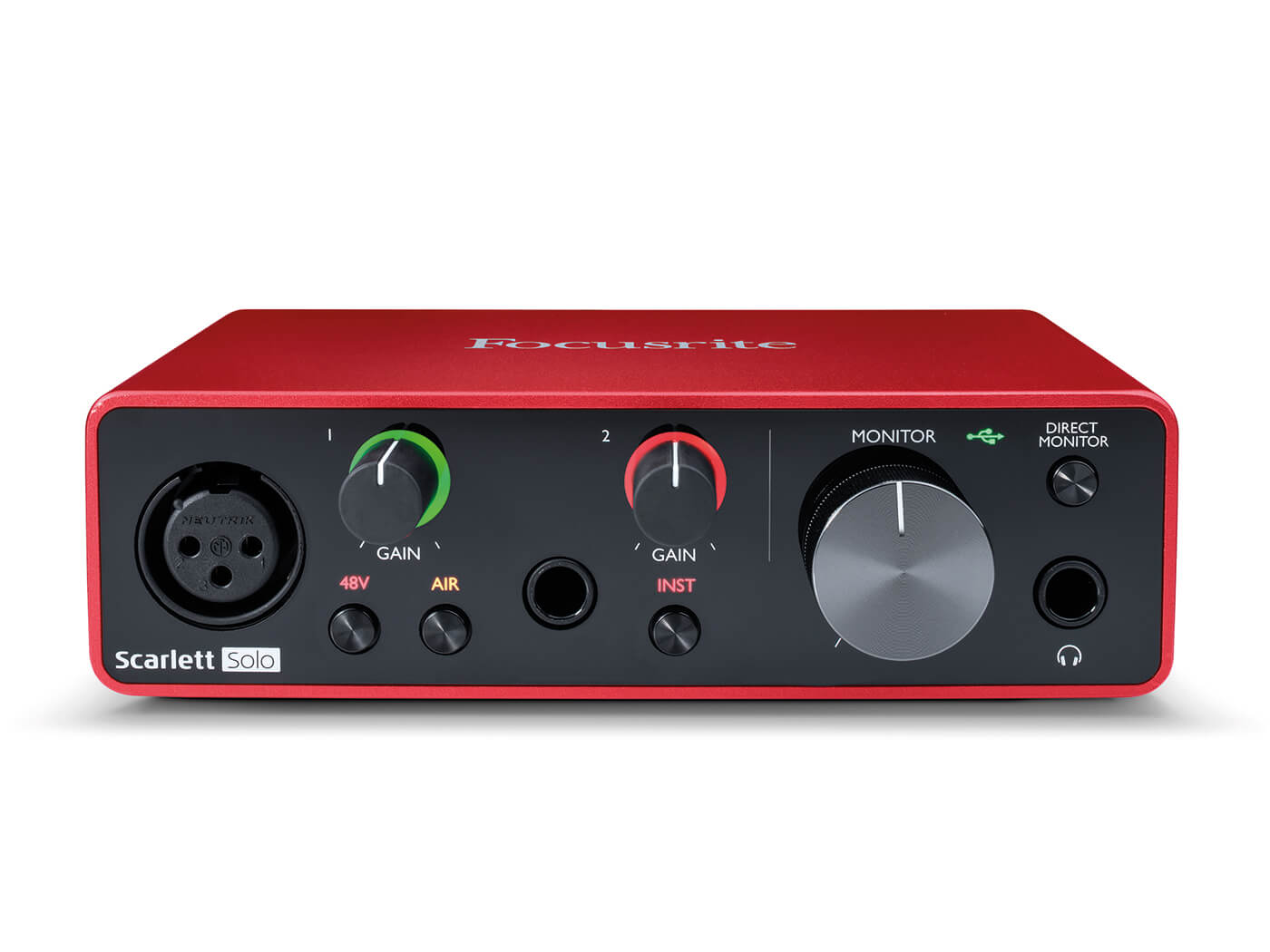
That'due south a lot of new interfaces, just in this review nosotros'll exist focusing on three models to comprehend the range: the entry-level Solo, the mid-range 8i6 and high-terminate 18i20. We'll also exist looking at the entry-level Solo equally office of a new studio package, which comes with headphones and a microphone in a future mini review.
All the models in this new generation avowal the Focusrite Air characteristic that I last saw in the Clarett USB range last year. This emulates the famous AIR Studios elevator in the high mids, which is a famous characteristic of the original Focusrite ISAs first used in that studio, and which were deputed by belatedly uber-producer George Martin for his mixer there. The top four models besides boast Loopback functionality enabling yous to capture whatsoever stereo feed from any hardware or software combo: useful for podcasters and those into flexible sampling.
The technical specs have been improved, likewise. The Dynamic Range figure – that is the difference between the output-level capability and the racket flooring, and so the bigger the better – is around 110dB beyond the new range for line, mic and musical instrument inputs. That compares to anything betwixt 106-109dB for the 2nd-Gens. Conversely, the Total Harmonic Baloney figures (a measurement of distortion and dissonance, so the lower the better) is around half that of the previous generation, albeit from a pretty low starting bespeak. The overall Gain Range has besides been improved, from 50dB to 56dB, and then it'south a promising gear up of specs.
I should also mention there'southward a free software packet with Live Lite and Pro Tools First, a Splice subscription, plus a good range of plug-ins from Softube, XLN Sound and Focusrite.
Fix to go
I of the other big new features of the new Scarlett range is the incorporation of Focusrite's new Quick Start procedure. This is your offset introduction to the interface, and interactive process 'designed to help those who need information technology to get upward and running quicker and easier than ever earlier', although more than seasoned users can skip information technology and jump straight to the software downloads, should they wish. Essentially, this is the registration procedure on steroids, and then you input your series number and y'all go taken through a series of steps to allow you to download either the Lite version of Ableton Live or Pro Tools First that comes with the interface, with a handy instructional video almost the installation. You even become a 'fourth dimension to install' indication (some five minutes for Ableton, 25 for Pro Tools), rather like the fourth dimension it takes to get to your gate at an drome. Very nice.
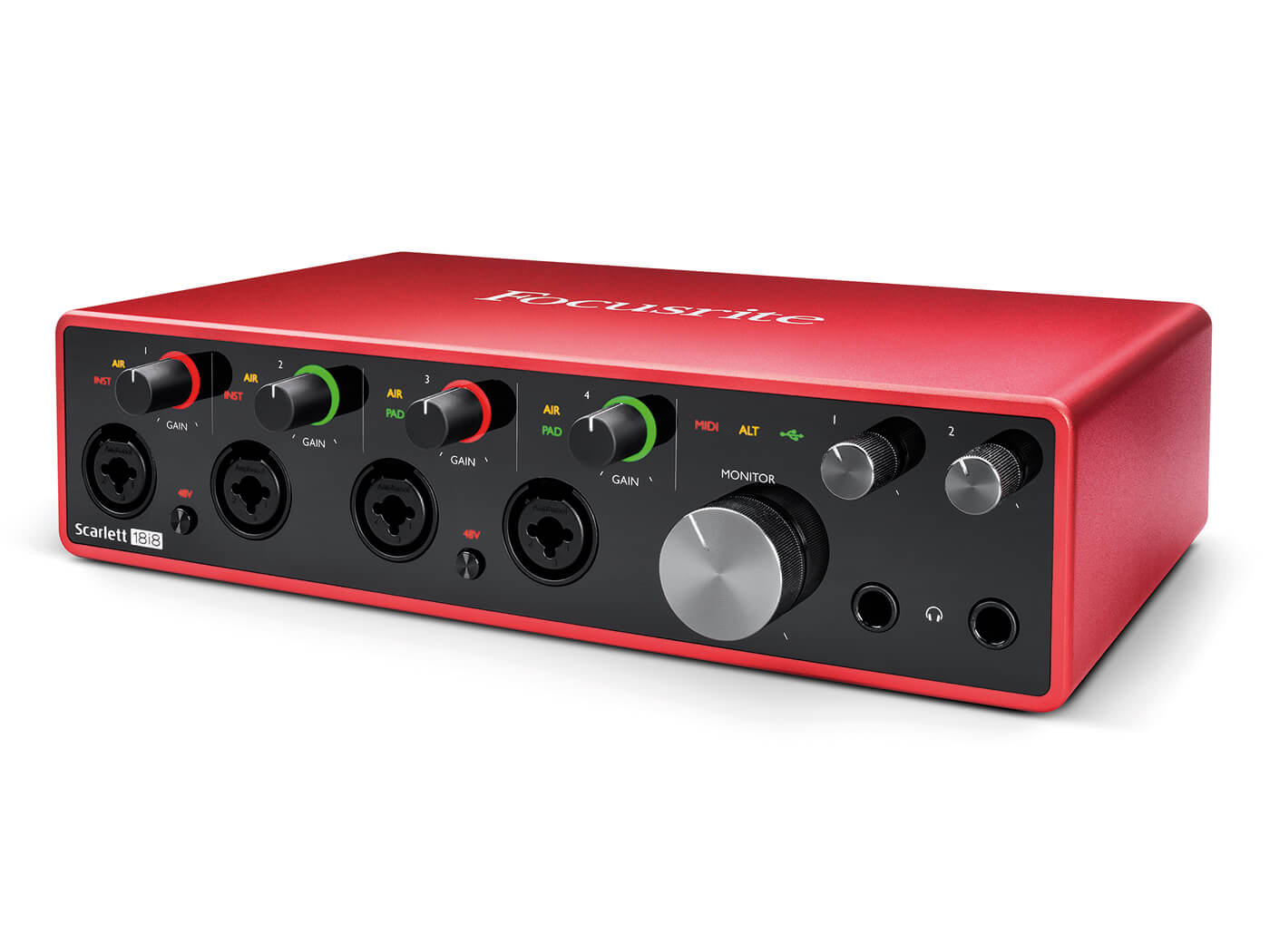
Farther tutorial content checks you through the supplied virtual instruments and plug-ins and sample-content installation, before explaining how to set up the Scarlett interface depending on how you lot are going to apply them. Here, you get asked whether you are more of an in-the-box producer or ane who will be recording externally, and are then given all the connectivity data, depending on the scenario you choose. It's a refreshing change to get this kind of interactive feel with any piece of gear, as most of the time y'all're relying on manuals that you don't really desire to read (every bit y'all're too excited or recall y'all know it all) and this does assist you get upwardly and recording faster.
More control
You lot'll need to download the latest version of Focusrite's Control software to use with the unabridged Scarlett range. This allows you to set up chief global device parameters – clocking and line/instrument inputs – and also mixing and routing options. Simply caput over to the downloads section of the Focusrite website, and select your device if yous didn't get it through the Quick Start procedure (or missed that out).
Within this software, you go Input Settings and Output Routing tabs. The main I/O routings, plus your internal DAW routings are set up in the latter tab, with outputs – line, headphones Loopback and Due south/PDIF – running superlative to bottom and inputs left to correct, plus your software and DAW connectivity options shown at the bottom.
More often than not, the software's gear up as you lot might wait, with your main outputs from your DAW going to outputs 1 and 2 of the Scarlett, only you tin can easily change all routing past producing a Custom Mix, and and so utilising the drib-down menus on each output cake to change settings. Changes to input routings are only as easy, as you get an overview of all available inputs on the far right of the UI and you can, for instance, hands configure inputs equally stereo pairs.
Within the Control software, you lot can besides bring the Air choice in the Input Settings tab and also switch between input line and instrument levels and the Pad option (to prevent clipping with hotter signals). See the first motion picture in the Command boxout for more than. Overall, the Control software is very easy to use and configure – setting up Custom Mixes really is a breeze – and an essential part of the Scarlett experience.
The hardware
I'll start with the Solo. At present this is a dinky unit: light, compact, well congenital, small enough to pocket and buss-powered, too, so a expert mobile-recording pick. Information technology features a mic input effectually the front, with a preamp common to the unabridged third generation of Scarletts that Focusrite confirms are the best-performing Scarlett preamps. In that location's also a loftier-impedance instrument input (for guitar or bass) which can also take line-level signals from drum machines and synths, etc, with the flick of the switch to its right. The unit of measurement features useful 'gain halos' around the front gain dials that light green when levels are proficient, orange for but okay or crimson when they clip.
Finally, on the front end panel in that location is a Directly Monitor push so yous can hear what you are playing and recording latency costless. These front-panel controls are very similar in layout to the last-gen Solo – as all the tertiary-generation controls are – so if you are familiar with, or upgrading from that range, you'll exist right at home here. Ane final Solo upgrade includes 2 counterbalanced TRS speaker outs effectually the back – previously, these were RCA connections.
Side by side up is the 8i6. Information technology features two combi instrument and mic inputs around the front with two mic preamps. There are a couple of headphone outs plus level command, over again with gain halos. Around the back you get S/PDIF I/Os, MIDI Input and Output, plus a further four inputs for line-level instruments (synths, drum machines etc), so with decent MIDI- and line-input specs, Focusrite is certainly acknowledging the growing hardware-synth scene with this one.
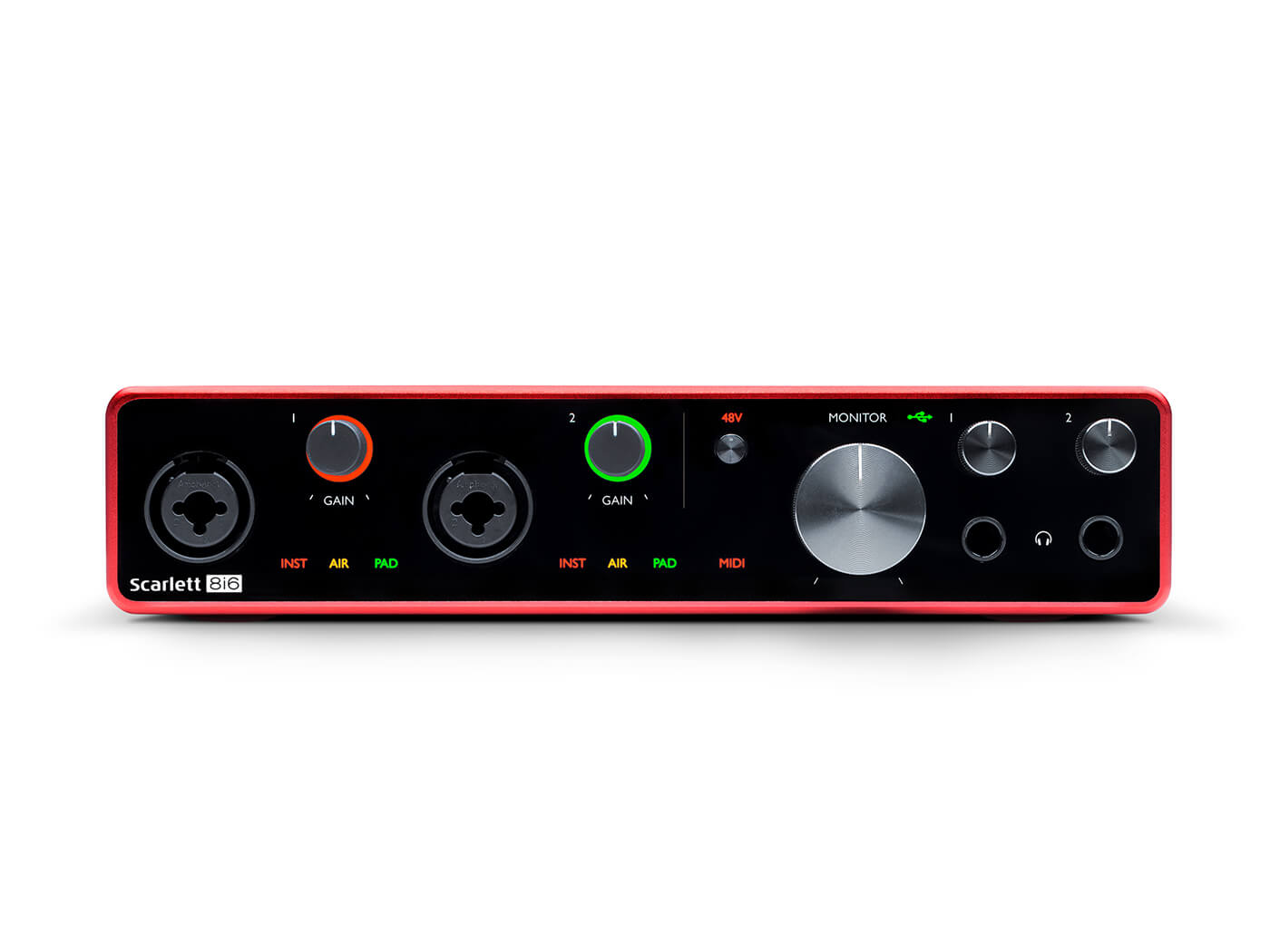
The unit of measurement is light compared to some similarly priced Audients and Steinberg interfaces that I've reviewed, simply feels sturdy and 'in place' on your desktop thanks to a full-metallic case and rubber feet.
Finally, the higher cease Scarlett 18i20 boasts eighteen inputs via two switchable combi mic/instrument/line XLR inputs and six more than via line inputs and Due south/PDIF I/Os. In that location are viii more than ADAT optical ins and outs (for the connectedness of external ADAT I/O expanders) plus ten physical balanced monitor outputs and two headphones. The large departure here between the 18i20 and the rest of the range is the more well-spec'd front console which is more meaty in terms of pinnacle but 1 set of LEDs indicates all level inputs and at that place are indicators for Air per aqueduct and Instrument for inputs 1 and 2. It also has optional rack ears for rack-mounting.
Scarlett audio
For the majority of the listening tests, I'grand using the mid-range 8i6 and the top-terminate 18i20, equally these have the wider flexibility, only the aforementioned preamps that the Solo uses. The beginning matter that strikes me is the racket, or lack of it, on setting up inputs. I try my admittedly quite noisy electric pianoforte first and the recordings I make are clean, deep and rich and completely noiseless. Microphone recording is just equally concise and noise-gratis – these really are clean interfaces.
I specially like the proceeds halos on the input; the traffic-light green, orange and red indicator exactly matching Logic'southward own levels and warning meters in this case, and they're an first-class secondary indicator.
I make some unproblematic acoustic piano recordings via mic inputs, with a one-mic setup and once more, it's the clean operation and wide dynamic range that stands out, something I retrieve from testing both the Clarett Thunderbolt and USB ranges. I also test the Air feature. Focusrite suggests that it's a growing upshot that rises towards higher frequencies, kicking in at 100Hz and edifice to 20kHz. As such, I didn't even notice it on certain sounds, but vocals – and to a certain extent upper ranges of the acoustic piano – there is a elevator. It's not dramatic, only certainly present.
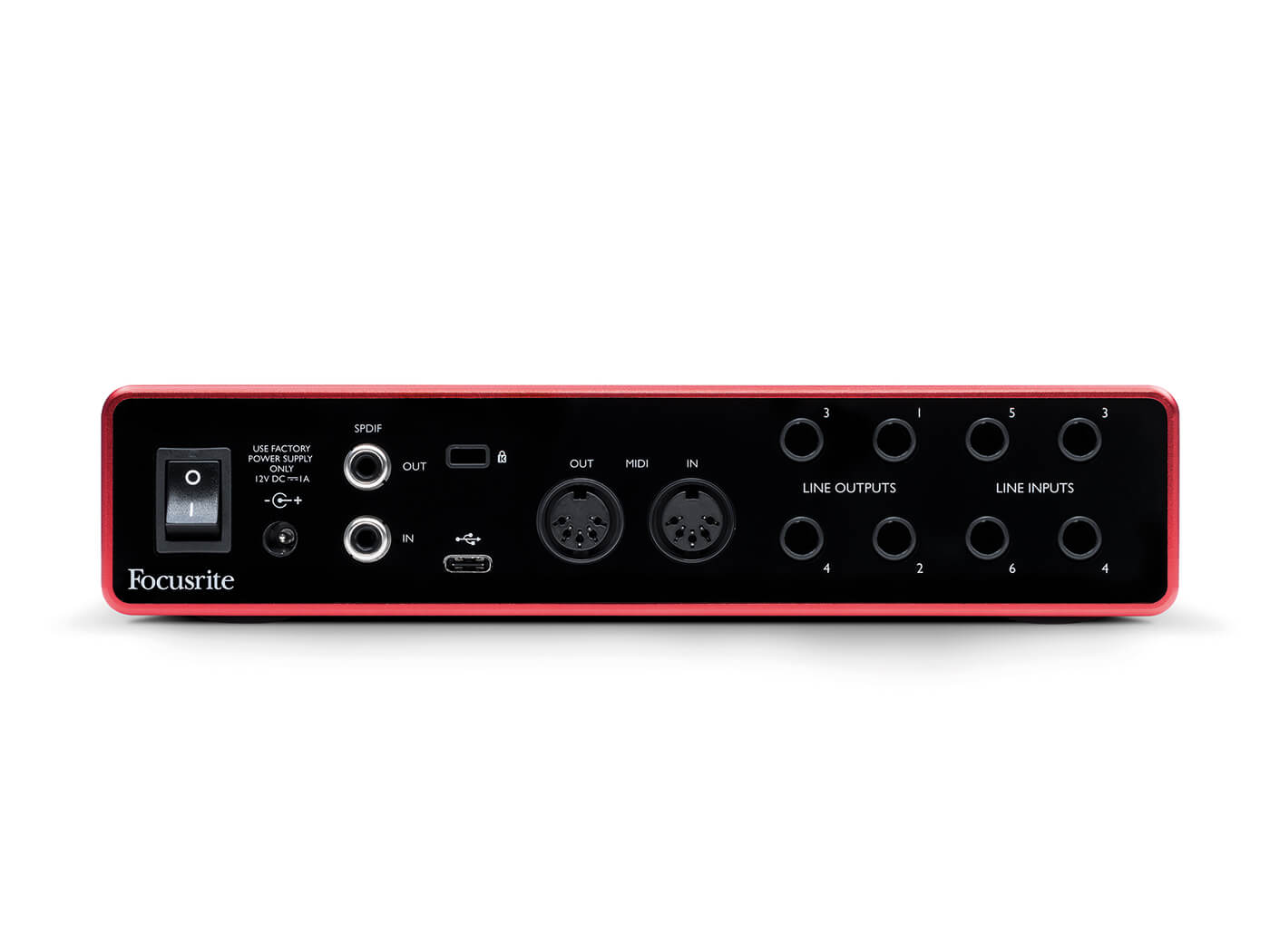
As a playback interface, Scarlett is also top notch. I compare the 8i6 it to my reference interface that comes in at a couple of hundred pounds more and the two are well-nigh indistinguishable on input recording through Logic – although I find I almost immediately miss that input-LED metering on the Focusrite as soon equally I swap. Every bit direct playback devices, over again the audio is comparable – retrieve that my reference interface is more than expensive.
Onto round-trip latency – the time it takes for a indicate to get through your interface, exist processed by your calculator, and come back to you via the interface. The effigy is dependent on many factors, including your calculating ability, what yous accept running, plus your buffer size and sample rate. My tests aren't exactly scientific (and you will get dissimilar figures), but every bit a comparison, with a 48kHz sample charge per unit and a buffer size of 32 samples, my Thunderbolt Clarett tests delivered a round-trip latency of 3ms, the USB Clarett 6ms and the Scarlett was 6.8ms. Over again, not definitive, only interesting that the Scarlett measures upwardly..
For skilful measure, I check all the results – latency, recording and playback – with the 18i20 merely to check that the audio quality and performance are every bit you would await and all my tests reveal identical results: a great dynamic, depression racket – even with lots of different instruments plumbed in – and low latency, and so fantastic results.
For good measure, I check all the results – latency, recording and playback – with the 18i20 just to check that the sound quality and performance are equally you lot would expect and all my tests reveal identical results: a great dynamic, low noise – even with lots of different instruments plumbed in – and low latency, and then fantastic results.
Determination
This third generation of Scarlett interfaces might not seem a radical step up from the previous range, just Focusrite has scattered some well-needed upgrades among the ready, from boosting the tech specs, to calculation inputs and improving the whole user experience – especially for newcomers to music-making.
At that entry level, the Solo maintains its predecessor's easy portability and compact and mobile grade and will easily accommodate vocalizer-songwriters wanting skillful-quality recording and playback on the move. The 8i6 will also suit newcomers and those branching out into more than hardware realms, mayhap those with a smaller synth setup or a small- to medium-sized hybrid hardware/software studio. It'south a smashing option for pocket-size-calibration instrument recording as well. The top-end 18i20 is my favourite, though. It crams more I/O into a compact unit and has all the connectivity that my synth-heavy studio requires.
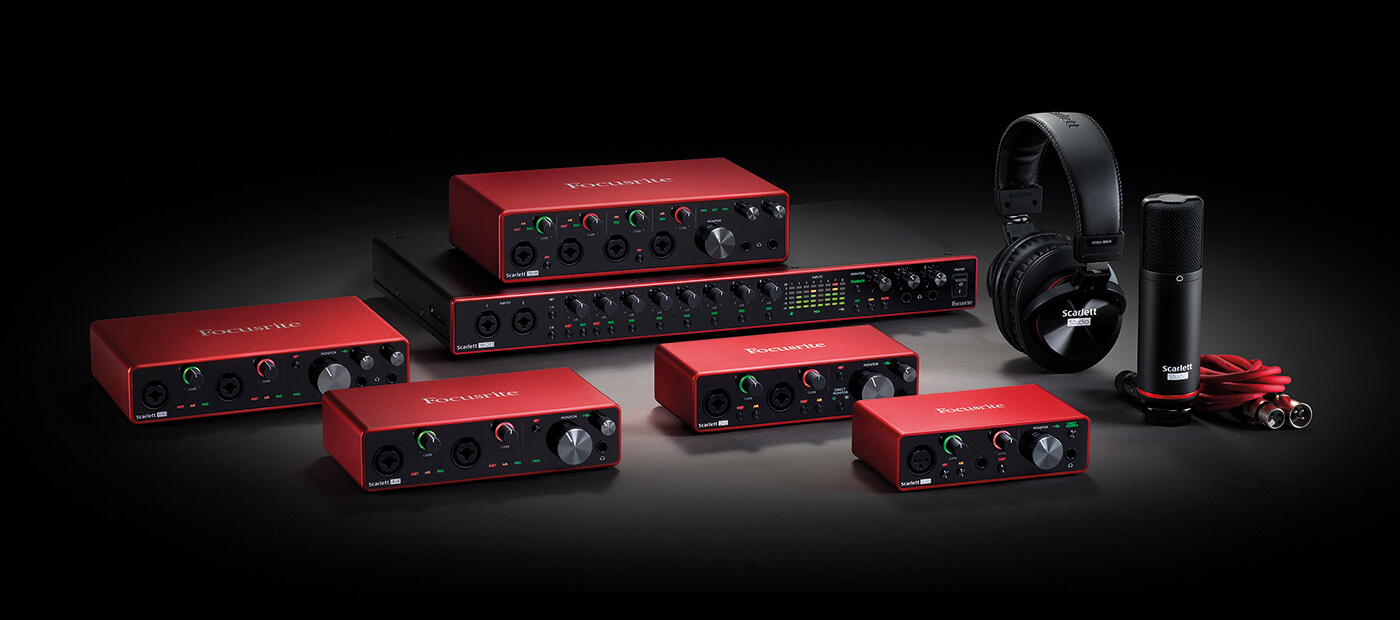
Every bit the quality of the Scarlett range has now clearly taken a step up – in terms of the preamps, the dynamic range and lower latency – it at present appears to sit closer to the more expensive Clarett range with similar specs merely using USB. The 18i20, for example, now looks more than than a match for the Clarett 8Pre, simply costs a lot less.
However, the Clarett range withal has meliorate latency figures and other audio specs, and better external ADAT connectivity to justify their higher price tag.
Back to Scarlett: the next generation, and so, and information technology certainly succeeds where it should. Amend quality, improved specs and not much of a shift in cost. It'due south difficult to see Focusrite losing that 'all-time selling interface' label any time soon.
Fundamental features
- Audio interface range
- On test: the Solo (2 in, 2 out), the 8i6 (eight in 6 out) and 18i20 (18 in, 20 out) models
- ''Super stable' depression-latency drivers
- Input Dynamic Range: 111dB
- Total Harmonic Dist. + Noise: >0.0012-0.0015 (mic/line)
- Gain range: 56dB
- Output Dyn. Range: 108dB
- Includes Focusrite Control software
- Software: Ableton Live Calorie-free, Pro Tools Kickoff, Focusrite Creative Pack, 3-month Splice Sounds sub, XLN Audio Addictive Keys, Focusrite Red Suite, Softube Fourth dimension And Tone Bundle, Focusrite Plug-in Collective
- Buy: Sweetwater, Thomann, SamAsh
Alternatives

Presonus
Studio range From £152
Pretty much the only range of interfaces out at that place with as much girth as the Scarletts is the Studio range from PreSonus. They have all sorts of configurations beyond 12 units, all USB compatible and with a good software bundle.
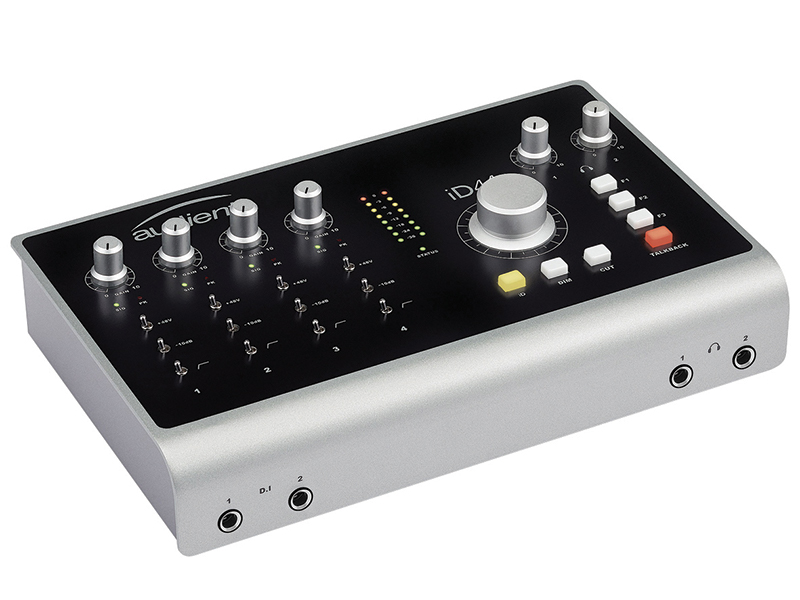
Audient
ID range From £99
Another interface line I have a lot of experience with includes the ID range from Audient. Featuring the aforementioned preamp quality as the visitor'due south high-end consoles, these are
well built and accept enough of I/O options.
Source: https://musictech.com/reviews/studio-recording-gear/focusrite-scarlett-3rd-gen/
0 Response to "What Kind of Speakers Can You Use With Focusrite 6i6"
Post a Comment